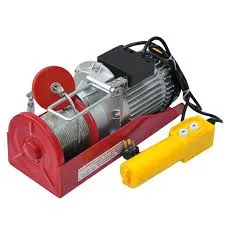


The Benefits and Applications of a 2-Ton Pallet Jack
In the world of logistics and warehousing, the efficiency of operations largely hinges on the tools at hand. Among the myriad of equipment used in these environments, a 2-ton pallet jack (also known as a pallet truck) stands out as one of the most essential. Designed to facilitate the movement of pallets loaded with goods, a pallet jack is invaluable in various industries, helping to streamline processes and reduce manual labor.
What is a 2-Ton Pallet Jack?
A 2-ton pallet jack is a manually operated hydraulic device that is used to lift and transport pallets. They are typically constructed from robust materials to withstand the rigorous demands of daily use. The device consists of two forks that slide under a pallet, a hydraulic pump to lift the load, and a movable handle for steering and maneuverability. The 2-ton designation indicates the maximum load capacity the jack can handle, making it suitable for a wide range of applications.
Efficiency in Material Handling
One of the primary benefits of using a 2-ton pallet jack is its ability to enhance efficiency in material handling. In a warehouse environment, time is often of the essence. The speed at which products can be moved from one point to another directly affects productivity. A pallet jack allows workers to transport heavy items without the need for additional machinery, such as forklifts, which can be cumbersome in tight spaces. This enables quicker transitions between inventory stages, ultimately leading to a more efficient supply chain.
Versatility Across Industries
The versatility of a 2-ton pallet jack allows it to be employed in various sectors, including retail, manufacturing, grocery, and logistics. In retail environments, pallet jacks are commonly used to move stock from storage areas to display spaces on the sales floor. In manufacturing situations, they facilitate the transportation of raw materials to production lines or finished goods to shipping areas.

Furthermore, in the grocery industry, a 2-ton pallet jack can effectively handle the heavy weight of cases of food items, which often come on pallets. Their compact design ensures that they can navigate through aisles and narrow spaces, making them valuable assets in high-density storage environments.
Safety and Ergonomics
Another significant advantage of using a 2-ton pallet jack is the focus on safety and ergonomics. Manual material handling can often lead to injuries, particularly from lifting heavy loads. By using a pallet jack, workers can avoid the strain associated with lifting by allowing the machinery to do the heavy lifting. Most models come equipped with features that enhance safety, including automatic braking systems and ergonomic handles that reduce the risk of excessive strain on the back and arms during operation.
Cost-Effectiveness
Investing in a 2-ton pallet jack is also a cost-effective solution for many businesses. Compared to other material handling equipment, such as forklifts, pallet jacks generally have a lower initial cost and require less maintenance. They do not require specialized training to operate, allowing companies to reduce costs associated with training sessions. Additionally, their relatively simple design means fewer mechanical issues, further saving on maintenance and repair costs.
Conclusion
In conclusion, a 2-ton pallet jack is an indispensable tool in the realm of material handling. Its ability to enhance efficiency, versatility across various industries, commitment to safety and ergonomics, and cost-effectiveness make it an ideal choice for businesses looking to optimize their operations. As industries continue to evolve, the adoption of such essential equipment will play a critical role in maintaining productivity and ensuring the smooth flow of goods within supply chains. Whether in a bustling warehouse, busy retail space, or manufacturing environment, the 2-ton pallet jack stands as a testament to the ongoing importance of efficient material handling solutions. Embracing this equipment is not just a step toward modernization; it is a commitment to excellence in operational efficiency.



